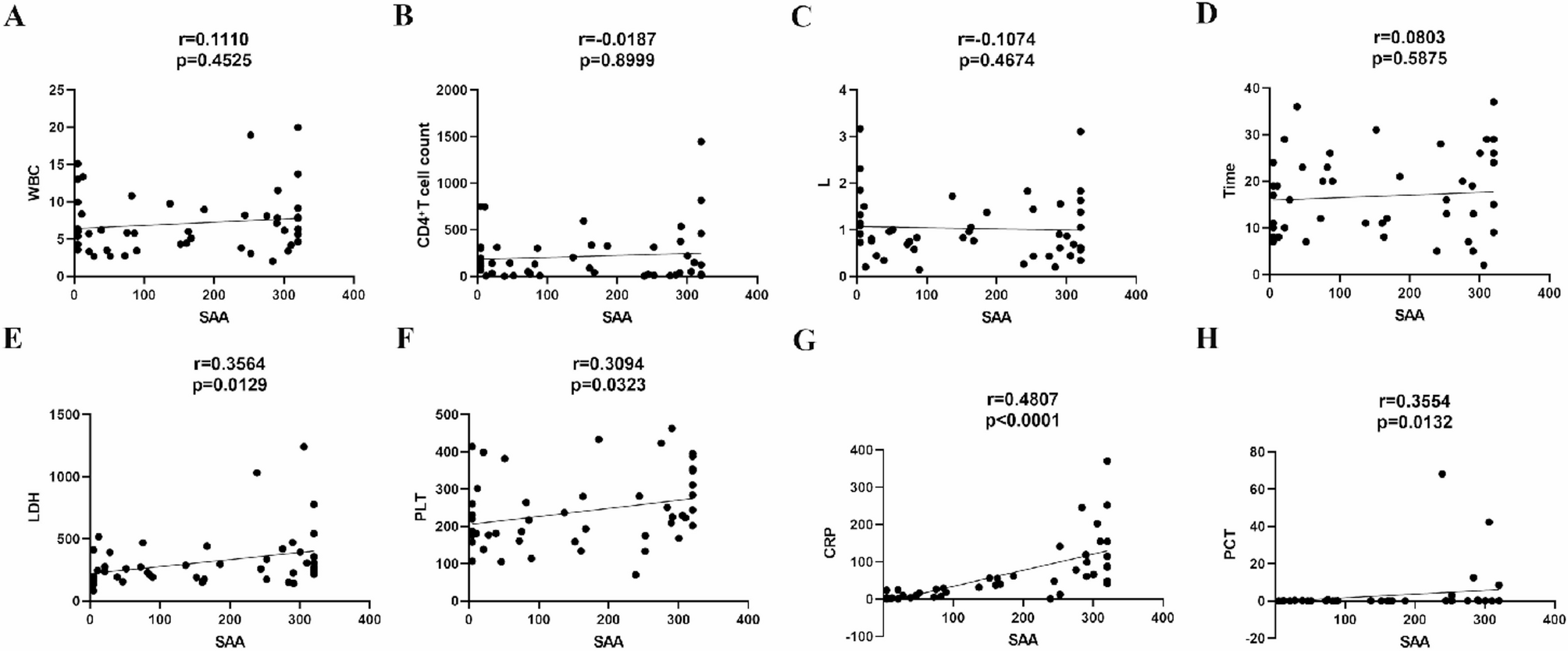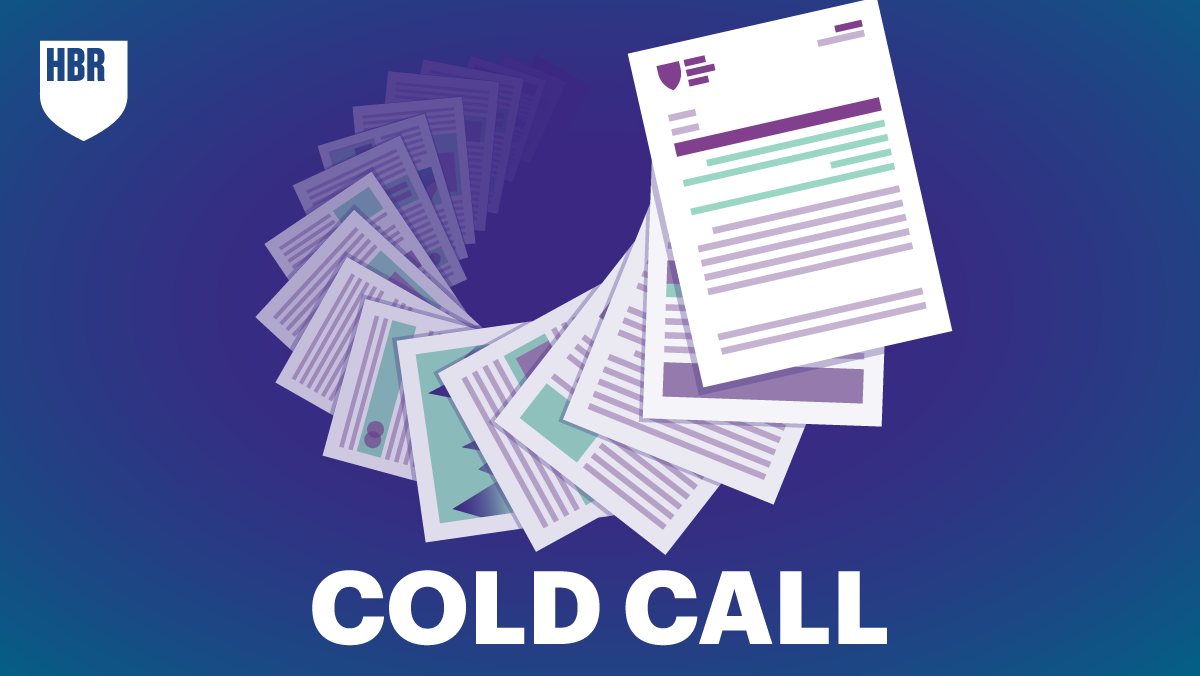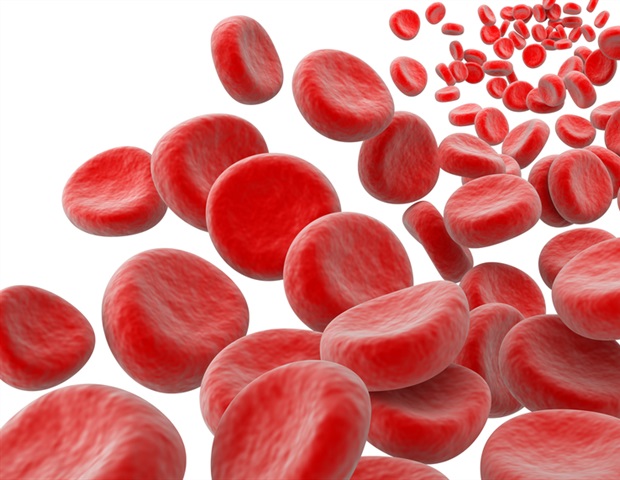BRIAN KENNY: Welcome to Cold Call, the podcast where we dive deep into the stories behind groundbreaking Harvard Business School case studies. As we sit down to record today’s episode, there’s a hint of autumn in the air in Boston, and children across the US are getting ready to start the new school year, which, for many begins by climbing aboard a big yellow school bus, the largest transportation fleet in the country. Today we’re diving into a case that explores how one organization is attempting to transform that fleet from diesel to electric. It’s a story as much about reimagining American infrastructure as it is about leadership, and complex partnerships. We’ll talk about innovation, public-private collaboration, policy incentives, and the immense logistical challenges of scaling a climate-friendly solution that affects the lives of millions of children.
And we’ll hear what it takes to maintain momentum, and customer trust when the road to change gets bumpy. Today on Cold Call, we welcome Professor Rosabeth Moss Kanter, and case protagonist Duncan McIntyre to discuss the case “’The Wheels on the Bus’ Go Electric: Highland Electric Fleets and Partners.” I’m your host Brian Kenney, and you’re listening to Cold Call on the HBR Podcast Network. Rosabeth Moss Kanter studies, and writes about strategy, innovation, and leadership for change. She has written innumerable articles, cases, and books on those topics, including her book, Think Outside the Building: How Advanced Leaders Can Change the World One Smart Innovation at a Time. Rosabeth, great to have you back on Cold Call.
ROSABETH MOSS KANTER: Thanks Brian. It’s a total pleasure.
BRIAN KENNY: Duncan McIntyre is the founder and CEO of Highland Electric Fleets. He’s the protagonist in today’s case. Duncan, thanks for joining us. This has got to be a very busy time for you.
DUNCAN MCINTYRE: It is, Brian, thanks for having me. I love being the protagonist. Appreciate it.
BRIAN KENNY: It’s a good title to have the protagonist as opposed to the antagonist. We don’t invite them on the show, so it’s great to have you here. Obviously, I hinted about the fact the school year’s about to start, those buses are going to be all over the roads pretty soon. Most of us remember them as big, bumpy, uncomfortable lurching vehicles. So, I think what you’re attempting to do, Duncan, is really improve that experience in a multitude of ways. So, why don’t we just dive right in. Rosabeth, I’m going to start with you and ask you what drew you to write the case, and why do you see Highland as a compelling study for business leaders? And importantly, what is your cold call when you start the discussion in class?
ROSABETH MOSS KANTER: So, I’m very interested in innovations that can make a huge difference, not just a small difference. And so I was looking for climate solutions with very big potential for scaling, and that also would not meet with public antagonism that would delight people rather than scare people, which has been one of the change problems around a very big existential threat we face. And so Highland popped up in a conversation with one of the investors who had been in an HBS program, whom I knew, who was telling me about this. And I got incredibly excited because of the potential for not only being a scalable climate solution that could be a profitable business at scale, or even before scale, and could impact the lives of so many children. And I thought of children as change agents we never tap who tell their parents, whose parents get delighted and can therefore build a future that’s the future they want.
We know that young people are most interested in climate more than older generations. And so I love the idea of Highland, which is built on a lot of complex partnerships and getting those school systems who are getting ready to have the buses, and by the way, Duncan’s buses had to be in place months ago in order for the school districts to be ready for back to school day. And so the cold call is a crisis that faced Highland when one of the largest customers and largest school districts in the US wasn’t getting the buses in time and had to quickly buy 80 diesel-fueled buses. Oh, my gosh. And were saying they had to look at alternatives, and maybe they would not go forward with the contract with Highland. So, I say to the students, You’re Duncan McIntyre. What do you do?
BRIAN KENNY: That’s a leadership crisis in the works right there. So, I’m sure we’re going to talk a little bit about that. Duncan, let me turn to you. The case, I think, quotes you as saying something to the effect of, one of the motivators for starting Highland was that your child was at about eye level with the exhaust pipe of a school bus, and that made you think about this. Maybe you can talk a little bit about the motivation behind what you’re doing and what you’re trying to achieve with Highland.
DUNCAN MCINTYRE: I’m happy to. Yeah, you’re spot on. I think the journey started for me when I recognized that our son, a second grader at the time, his mouth was literally at the same height as the tailpipe on a diesel school bus. The source of poor air quality in urban areas in our country and globally is not from power plants anymore. It’s from tailpipes, it’s from our transportation infrastructure, and predominantly it’s from diesel tailpipes. The reality is I recognized that we had the technology to fix this and shift it. Battery electric vehicles were getting more mature. The technology was being adopted by big bus and truck manufacturers, global companies like Daimler and Navistar.
But it was really complex, expensive, and the implementation and the services needed were extensive, and the average public transportation department just isn’t staffed or resourced to do that independently. So, to me it was a problem worth solving, worthy of our time to solve, and a really interesting opportunity to stitch together a whole bunch of services and structured capital that makes it affordable and reliable to make this transition. As Rosabath very elegantly teed up early on, when you really get into building out the business plan and running the math, that’s an exciting business opportunity because these buses operate much cheaper than a diesel bus. The fuel’s cheaper, there’s less maintenance. And not only does it have a public health benefit, but long run has the promise of just being a cheaper, better alternative for cities, and towns alike. And so it became really exciting on paper, and it was compelling enough that I said, I got to leave my job. I got to go run at this, which I did.
BRIAN KENNY: Yeah, that’s great. Rosabeth, you talked about change at scale in your opening remarks there. This certainly would be change at scale. I mentioned in the introduction this is the largest public transportation fleet in the country. I have no idea—you might know Duncan better than I do—how many school buses there are on the road, but it’s big. So, the opportunity is big. Rosabeth, how does that affect the way that Duncan and Highland need to think about scaling their business to meet this kind of a demand?
ROSABETH MOSS KANTER: Well, so first of all, there is likely to be even more demand in the future because as this works, more and more school districts, cities will want this more, and more areas will want this, and it’ll be a demand for more buses. And so here’s Highland, which is really a services company, and yet works in incredibly closely with the bus manufacturers, then with the school district and with the utilities and so forth. Highland doesn’t have any control over the manufacturing of buses, but this really could be big. I can imagine this is one of the moves that will help increase demand for public transportation. So, that creates an enormous opportunity for electric buses in the regular fleet, but certainly for the schools. And I think it will help more parents decide that it’s not only safe but pleasant for their children to be transported in electric school buses. And that will be a cascade to the rest of public transportation, and cities. And so this itself can be a big business, but it also can have really big impact well beyond for other kinds of fleets, which I’m sure Duncan is eyeing.
BRIAN KENNY: So, the stakes are huge. Duncan, I think the last thing any school superintendent wants is to be on the news around the start of school because something happens with the school bus fleet. And we see these reports all too often. The case talks about the fact that Highland is a little bit like a duck that’s calm on the surface, but the feet are moving rapidly beneath the water surface. And that speaks a little bit to the complexity of what you’re trying to do here. How do you think about making things as simple as possible for the people who are running the school district, because there’s so many other things that they have to worry about, and this shouldn’t be one of them.
DUNCAN MCINTYRE: Despite all the benefits of electrification, the process and the path is complex, and the implementation upfront in getting an electric fleet up and running smoothly is complex. And then the ongoing services needed to support the fleet to keep it running smoothly is also complex, and it’s new. And so our approach, to answer your question, is to really bring the complete solution. We’re not bringing a part of it and telling the city they have to bring these three or four other things. The cities very often do have a strong workforce. They’ve got mechanics, and they’ve got drivers. And we typically like to partner with cities to provide workforce development and bring their staff up to speed to continue doing their jobs. But we try to bring all of the technology, all of the equipment, all of the construction that’s needed to build out the depot, make it an electrified depot, build it in a way that’s hardened so it can run for 40 or 50 years as a depot and then do all the implementation needed.
If you’ve got one piece that’s out of sync, you may have a fleet that’s not running smoothly. And so as a result, since the market is early and still developing, we’ve had to vertically integrate at Highland, we’ve built a team for just about everything, and without that we would lose product control and not be able to deliver that sort of high-touch certainty to the cities and schools that we partner with. And I think over time we’ll find that the market will mature, and there could be more that’s done locally, but we’ve found that bringing it all together and really making it performance-based is the key to success in this stage of the market.
BRIAN KENNY: Yeah, Rosabeth, let me ask you to comment on that because I’m wondering, and you’ve looked at a lot of different industries, you’ve looked at a lot of big problems at scale. Is this a huge differentiator do you think, for Highland to be able to vertically integrate and provide kind of a one-stop solution?
ROSABETH MOSS KANTER: I mean, the ability to bundle a lot of services, and then the school district, the buyers, the customer doesn’t have to worry about dealing with lots of different subcontractors. That’s one huge advantage. Another is not displacing the current workforce. I mean, Duncan said work with the drivers, the mechanics that the district already has. Think about that. There’s a little blue-collar rebellion in America going on in light of digital and AI, but we need those mechanics and drivers. I don’t think parents would be happy with a driverless school bus. Maybe we’ll get to that someday, but I think it’s really in the distant future. This is a way to understand how to use existing resources in the school district as well as bring all the other services that model where you bundle. So, there are competitors looking at this, but they’re not necessarily looking at providing the whole services package. That is a differentiator. That’s always been a winning formula for businesses, help your customers succeed by bringing them innovative solutions.
BRIAN KENNY: Duncan, I’d love to hear a little bit more about the challenges or opportunities with upskilling the existing workforce. The case does mention that some of the drivers that had to get behind the wheel on these buses were resistant. And I don’t know what it’s like for mechanics to work on a diesel engine versus an electric engine, but maybe you can talk a little bit about some of the challenges that you face there.
DUNCAN MCINTYRE: I think it’s natural for folks to be hesitant if they’ve been in an industry that hasn’t changed much for 25, 30, 40 years, and this is exactly that moment in time. There’s drivers and mechanics who’ve come up through a traditional diesel engine, driving a bus that’s felt roughly the same for a long time. And so it’s natural that they’re hesitant. But once people experience it on their own, and they feel it, they tend to be really excited. The drivers find this ride to be smooth, quiet, and Zen-like, and there’s better braking and better torque.
BRIAN KENNY: I never thought I’d hear those words in association with a school bus.
DUNCAN MCINTYRE: I know. It’s really incredibly smooth and quiet. And so even the most steadfast naysayers have come around, and said, I’m never giving this bus back. I love it. So, that’s one piece.
The second piece is, we often find that schools and cities want to work with us for different reasons. And one of the reasons is because they can’t hire enough diesel mechanics. There aren’t as many people who want to go into that trade anymore. And if you’re short-staffed at the local level, it doesn’t really matter how many drivers you have if you don’t have buses that are operable. And so when you take mechanics who may want to retire early, they’re tired of being covered in grease and oil at the end of the day, they’re tired of just the working conditions, and you show them how to diagnose a problem and how to fix something on an electric vehicle, there’s just very little to fix. There’s very few moving parts, and it’s the early days of the technology being rolled out, but the equipment is really darn good.
And the net result is we’ve found it incredibly effective to run training and retraining and sort of an ongoing cadence of training in every community that we serve, sometimes monthly. And that makes a huge difference. It allows the workforce to stay in place. It creates a recruiting tool to recruit new drivers in some cases. And we’ve had many, many older drivers say that they’ll stay in the seat for more years because of this product. So, we just see it as essential and as an essential way to partner with communities.
ROSABETH MOSS KANTER: I hadn’t thought about this as another benefit besides they’re quiet, and you have clean air—you save on laundry!
DUNCAN MCINTYRE: You save on laundry! You do. We have a driver who came home, and said his wife met him at the door and gave him a kiss for the first time in five years because he didn’t smell like diesel fuel anymore.
BRIAN KENNY: Imagine that.
DUNCAN MCINTYRE: I mean, that brought a smile to my face.
ROSABETH MOSS KANTER: That’s a wonderful story. And in fact, it’s all of these side benefits in children’s health, in the drivers being able to recruit and retain. And then the fact, Duncan, you also mentioned that you do the training, or you lead training, that’s another service that’s very important for the school districts. The school districts, like universities too, get burdened with administration and with having to do all these other things. What they really want to do is teach the children. So, this saves them from a lot of other areas they would have to manage. So, I’m even more sold than I was when I wrote the case.
BRIAN KENNY: Duncan have you, I’m curious, have you surveyed the children about their experiences on the buses?
DUNCAN MCINTYRE: We have. And the children universally just think it’s really exciting. One child years ago called it the magic bus, and that’s a name that stuck. They think it’s really interesting, and kids like to sort of get down on their backs, look underneath the vehicle, get inspired by the STEM aspects of how to think about a battery and an electric motor and the difference between that and a combustion engine.
We’ve definitely been inspired by kids to author a whole bunch of curriculum that’s starting to roll out. This is not the business we’re in, but we’ve done it, and provided it for free to communities that want to think about this as a curriculum part of engagement in the curriculum of, in some cases, middle schools, and in some cases high schools. So, I think the feedback from students has been tremendous. And the last thing I would say is the community engagement is powerful in showing the versatility of these vehicles. These vehicles can actually, they’ve got big batteries, they can go back up a building when the grid’s out. And so we have a snow cone machine, and we send it around, and a school bus will come to a park in the summer and plug the snow cone machine in, and the snow cone machine will run off of the school bus because it’s got this energy-dense battery, and we give out free snow cones to every kid who wants to show up. And it’s been really fun and a neat way to really just get the word out.
BRIAN KENNY: Yeah, that’s the way to a kid’s heart right there.
DUNCAN MCINTYRE: That’s right. Snow cones on a hot summer day.
BRIAN KENNY: Love that.
Rosabeth, the case talks a lot about the importance of building partnerships, and you and I have had many conversations on this show over the years about how difficult it is to build those partnerships both now in this side we’re talking about with public agencies, with private enterprises. Can you talk a little bit about some of the leadership challenges that Duncan has probably faced—and Duncan, you’re free to jump in on this as well—in building, and maintaining these kinds of partnerships?
ROSABETH MOSS KANTER: I mean, if you can deliver on your promises, like, that was the issue we talked about at the beginning. You don’t necessarily control how quickly the manufacturers can build buses. You don’t control all the politics, but this has a huge advantage because you don’t have to sell it as a climate solution. It had that, to many people, is a side benefit; to the kids, I’m sure it means a lot, especially the older kids. You sell it on efficiency, you sell it on the immediate benefits, and that’s what you have to do.
In terms of your partners, I mean, what impresses me about Highland and the culture that you’ve built, Duncan, is that it’s very team oriented. And when a partner has an issue, you’re there immediately. I mean, I don’t want to give away the answer to what you did with Montgomery County, but you were on that airplane, high-emissions airplane, I must say, but high-emissions airplane right there and in their office to talk to them. Partnering is a very hands-on thing. It’s not a matter of signing a contract. It’s a matter of being there when they need you. It’s a matter of being on the ground and knowing their needs. And the customer here is every bit as much a partner as the suppliers, and the utilities. I mean some of these things, once people experience them, are unstoppable, but nurturing partners by being present, by being on the road, by traveling, by listening to them and their needs, by having dedicated teams that are experts in their field, that’s how you do it successfully.
DUNCAN MCINTYRE: I agree. If I could just build on that, the partnership question, I think, is key. The manufacturers are key partners. We don’t manufacture the buses. We purchase them, we implement them, we get them running, we service them, we finance them, we kind of do everything else, but we don’t manufacture. The manufacturing companies have been leaning into this industry, they’ve been developing good product, but what they need is assurances. If they’re going to invest a hundred million dollars in building a new manufacturing line, they need to know they have an order book behind it. They need to know that the customers will be there, and they need to know that as they get to scale, they can streamline their supply chains and drop the price and make it a durable long-term product that survives without incentives. We are a key partner of the manufacturers in that part of their journey. In many cases, giving them visibility into our order book, giving them visibility into the data that we’re pulling off the vehicles operating every single day, helping them weekly improve the product and think about where we need to stock spare parts, where we need to change diagnostics. So, it’s a deeply integrated technical partnership, but also a partnership that allows us to invest in each other and help each other out as the going gets tough, which it does from time to time.
And so when Montgomery County was faced with buses showing up late, and that was a difficult time for everyone, for the manufacturer, for the school, and for Highland, the supply chains coming out of COVID made it very difficult for lots of small manufacturers that supply key components to these vehicles. We had to roll up our sleeves and really get into the weeds. And the solution to a problem like that is by going deep into, What is the result we need? We want the electric buses running as soon as possible, but we may need a stopgap for three, four months in the interim. And so, there’s lots of strategies that can be solved quickly and efficiently if you have tight partnerships.
ROSABETH MOSS KANTER: And the time to build those tight relationships is not when you have a crisis. It’s from the beginning so that when you have a crisis, you already know everybody. You can jump right in, and there will be a crisis. This is my “Kanter’s Law” that everything can look like a failure in the middle. And you hit those middles, and you have to be ready to move fast, because if you give up, it’s gone. It is a failure. If you keep going, if you persist, persevere, find a solution, then you can move it on to success. And here, success means not only that particular contract, because this is a new industry; success means the demonstration to everybody else, because if you give up, they’re going to give up, and the industry starts going downhill. This is an industry still vulnerable. You need people who actively support what you do and see the vision and are willing to go there with you. And so, you have a long-term vision. But it’s not the technology by itself; it’s the people and the relationships that you activate when you need to that make a company like this succeed.
BRIAN KENNY: Excellent point. And I’ve heard “Kanter’s Law” mentioned a couple of times on this show in the past, so I’m glad that we still bring that up. Duncan, a question for you. Rosabeth talks about the fact that everything can look like a failure in the middle, and you’ve got to press on. Was there any point at which you thought, Oh, man, this is not going to work. I’m in over my head. I got to throw the towel in on this thing?
DUNCAN MCINTYRE: Not a single time. I don’t mean to sound overly confident, but I’m an eternal optimist. Our mission at Highland has always been to make electrified transportation accessible and affordable to all communities. And so that’s serving Red Lake Nation in Northern Minnesota and serving Montgomery County and serving Compton in California. And it’s urban, it’s rural, it’s affluent, it’s historically very underserved. It’s everything in between. And when you do that enough times, you can see the durability of your service offering, and you can see the value and the benefits you bring to the communities that you serve.
And then you also get to see the internal piece of the team that we’re building at Highland and the community and the family that we’ve built here. We’ve got 200 employees and growing. We’re serving closing in on a hundred cities by the end of this year. The “Kanter Law,” I like that, I might start using that, is that things will go bad in places. They will. And when you’re running complex transportation infrastructure in an urban environment, you’re going to have an issue every day. Forget about monthly, you’re going to have an issue every day. And so, if you build the teams and the technology backbones to streamline the process of fixing it every time something goes wrong, it’s very calming in the sense that you’re giving them the best experience you can give them. And you’re never going to have 100% uptime in a fleet. But if you can be in the mid to high nineties, that is a lot better than a diesel fleet. It’s a lot better.
BRIAN KENNY: Pretty good, yeah.
DUNCAN MCINTYRE: Correct. And so, I’m excited about the business, and I’ve never believed that the towel might have to be thrown in, I’m happy to say.
BRIAN KENNY: Yeah, this has been a great conversation. We’re getting close to the end of our time. So, I’ve got one question left for each of you, and I’m going to give Rosabeth the last word on this. So, I’ll start with you Duncan. If you sort of imagine 10 years from now, what do you think success will look like for electrification, for Highland specifically? Is there sort of a vision that you have in mind where you’re like, Yeah, we hit our stride. We’re where we wanted to be?
DUNCAN MCINTYRE: Success for electrification is a broad macro theme, and I believe 10 years from now, the vast majority of on-road transportation will be electric. It’s an upgrade in terms of technology. And I think the vast majority of transportation will be electric. If you unpack that a little bit, there’s always going to be people who want their personal vehicle to be based on a combustion engine platform. There are enthusiasts who I think will be tough to sway, but the vast majority of commuters, travelers are going to end up in an electric platform. When you get into medium and heavy duty, most of these vehicles have a job. They’re picking up trash, they’re moving students, they’re moving people around cities. Those are all incredibly naturally suited for electrification. And 10 years from now, 80, 90% of those fleets I think will be electric.
The second part of your question is Highland. Our vision is to make this affordable and reliable for communities. And we’re investing to set up shop and prove to those communities that we can serve them long run. It takes a long time to develop those relationships and prove to communities that we’re going to be there for the long run. But that’s the way we’re investing. I think we’re building a really special, unique brand that is all around electrified transportation as a partner with cities. And that’s my vision for the company: I believe, we’ll be a platform business that continues to do what we’re doing today, supporting communities with energy, resiliency, and transportation, and all the workforce development needed to sort of bring those communities into a modern upgrade.
BRIAN KENNY: So, what I’m hearing is it may not just be school buses in the future; we might be looking at other transportation as well.
DUNCAN MCINTYRE: We’ll put electric garbage trucks on the road trucks this year. We’ll put a whole host of vans and other vehicles that serve schools and cities. And we’re finding that when we’re up and running in a city, they’re really eager to have our services extend beyond school buses. And so, we’re doing that actively today.
BRIAN KENNY: That’s a perfect segue into my question for you, Rosabeth, which is, can you maybe talk about some of the leadership lessons that we can learn from what Duncan’s been able to achieve here? And is this really a case about the role of business and society and the kinds of things that business can do both to do well for themselves but also do well for their community?
ROSABETH MOSS KANTER: This is a great example of how you can accomplish many goals with one solution. And if you’re aware of the larger context, and you have a big vision, then you can accomplish all of those goals for children’s health, for vehicle efficiency, for transportation efficiency, for reducing emissions.
It’s also a great example of how we sell climate solutions. You don’t have to say “climate.” Again, those who like that will be ecstatic, but those who don’t, there are so many other benefits you bring. And so, you don’t just bring ideology. What business brings is they bring concrete solutions that benefit people. And then there are the micro leadership lessons. Like, you really understand the context your customer is in. You build close relationships with partners. You understand scaling. I mean, Highland scaled from something close to home that was pretty easy because they were very receptive to one of the biggest in the country. And then all this diversity you have to demonstrate over and over again. And then you build great teams with a culture that makes people want to work there and see the vision and care about the mission. And then you never give up. Kanter’s Law, you just never give up, and you celebrate success. So, I also love the culture of celebration that Highland has because each win buoys people’s spirits, and I hope that this particular case will make people see what’s possible. It’s happening, and it’s working.
BRIAN KENNY: Duncan, the case mentions that there’s a gong every time you win a deal. Somebody hits the gong. I should have had you bring the gong on so we could all hear, but it’s busy, apparently.
DUNCAN MCINTYRE: It’s a busy gong. That’s exactly right.
BRIAN KENNY: That’s great. Rosabeth?
ROSABETH MOSS KANTER: Well, between those snow cones and the gong, I mean, that’s another thing I want to say. I’m concluding that if we don’t make solutions to big problems fun, if we don’t make it enjoyable for people, they will never be part of it.
DUNCAN MCINTYRE: Well said. Thank you.
BRIAN KENNY: That’s a great way to end our conversation. Thank you for joining me on Cold Call.
ROSABETH MOSS KANTER: Thank you.
BRIAN KENNY: If you enjoy Cold Call, you might like our other podcasts: Climate Rising, Coaching Real Leaders, IdeaCast, Managing the Future of Work, Skydeck, and Think Big, Buy Small. Find them wherever you get your podcasts.
If you have any suggestions or just want to say hello, we want to hear from you. Email us at coldcall@hbs.edu. Thanks again for joining us. I’m your host Brian Kenny, and you’ve been listening to Cold Call, an official podcast of Harvard Business School and part of the HBR Podcast Network.









